Did you recently add the perfect fish to your aquarium, just to find it covered in white dots a couple of days later?

Learning how to properly treat a saltwater Ich outbreak that’s spreading in your display fish tank is crucial at this point.
A reef-safe treatment may require moving the infected fish to a separate hospital tank.
This is so because all efficient methods for treating marine white spot disease are harmful to invertebrates.
The most important thing when dealing with an outbreak is to stop the on-going life cycle of the parasite.
What are the best treatments known to cure saltwater Ich in aquarium fish? How do you perform them and when are the parasites vulnerable?
Is it really Saltwater Ich that you’re dealing with?
The saltwater parasites that cause Ich or Ick are persistent and won’t go away on their own. Treatment should be carried out immediately after diagnosis. To treat a fish disease properly, you first need to take time and make sure the diagnosis is correct. Consulting with a vet is the best way to do that!
Here’s what saltwater Ich is and how to identify it:
A marine parasite from the group of ciliate protozoans named Cryptocaryon irritans, is responsible for the Ich outbreaks that affect saltwater aquarium species. Infected fish develop small white spots that can appear overnight. These tiny lesions emerge primarily on the fins and tail of the fish. The spots caused by saltwater Ich have a circular shape and are raised, with a diameter of 0.05 to 0.5 mm or 0.002 to 0.02 inches. Environmental stress factors such as aggressive tank mates, shipping, and fluctuating water temperatures are all major contributors to White Spot Disease outbreaks in marine aquariums.
On rare occasions, white lesions may not be visible at the beginning of the outbreak, because the Ich parasite has infected the gills of fish first.
In these cases, the disease can be diagnosed through behavioral symptoms such as respiratory difficulties.
Full list of exhibited symptoms
Typically, you’ll be able to tell if your pet fish are sick because they will show distinctive sings of some sort.
Though parasitic Ich can be diagnosed by its characteristic small white spots, there are also a couple of behavioral symptoms that accompany it. These can be used to confirm the infection in the early stages of the outbreak.
The signs and symptoms that are displayed by saltwater fish infected by Ich are:
- Raised white spots on the skin that resemble grains of salt
- Poor appetite
- Listlessness
- Clamped fins
- Fading body colors
- Rapid gill movement
- Dashing and scratching against objects
To confirm that your marine fish are experiencing an outbreak, take a look at these photos that will help with identifying the white spots caused by saltwater Ich:

By Mrcote1
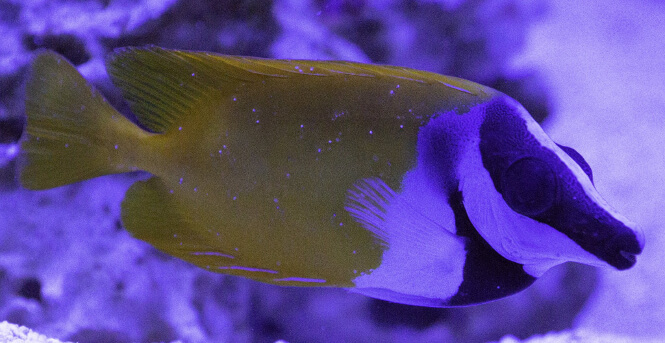
By Bri Carr

By Crimsontopper
It’s important to remember that saltwater Ich outbreaks are often confused with the Marine Velvet Disease which is caused by a different external parasite named Amyloodinium ocellatum.
The white dots caused by Marine Velvet appear like fine dust, where the ones caused by marine Ich look more granular and appear as grains of salt.
Take a look at this visual comparison of the differences between marine Ich and the Velvet disease:

By ScubaZ and Sarah1990
After you’ve confirmed that your saltwater aquarium has Ich, you need to initiate treatment to prevent fish mortalities. To do so adequately we need to have a look at the parasite’s life cycle.
Life cycle and vulnerability
This external parasite can’t be killed unless you target its vulnerable life stage.
The time marine Ich takes to complete its life cycle in saltwater, depends heavily on water temperature among other factors.
The average duration of a full parasitic cycle that goes through all life stages lasts between 2 weeks and 6 days at a water temperature range of between 59 and 86°F (from 15 to 30°C).
The life cycle of marine Ich has 4 distinct life stages:
- A feeding Trophont that stays on fish for 3 to 7 days. The trophonts of saltwater Ich appear as white round spots on the skin of infected marine fish. At this stage, the parasites remain under the outer layer of the skin of their host and feed on body cells and fluids.
- A Protomont that exits the host and moves around in the substrate for 2 to 18 hours. In its Protomont stage, Ich leaves the fish host and falls on the substrate. There, it moves around for a short period of time before forming a protective cyst and becoming a Tomont.
- A stationary Tomont that produces new daughter parasites in 4 to 12 days on average. The period needed for Ich Tomonts to develop in saltwater is hard to predict and can vary between 3 and 76 days. Factors such as strain and temperature influence that period. The Tomont has a hardened cyst as an outer layer, which protects it from potential treatment. Inside the Tomonts new parasite cells, called Tomites, divide. Each Tomont is able to produce between around 100 and 1000 Tomites, depending on the strain of Ich.
- An infective Theront that searches new fish hosts for up to 48 hours. The fully-developed Tomites, that emerge from the Tomont cyst, are called Theronts. Theronts are not protected by cysts and swim for up to 2 days in search of a new host. During the Theront stage of its life cycle, marine Ich is vulnerable to treatment.
Take a look at this infographic illustrating the whole life cycle of saltwater Ich:

A water temperature of 104°F (40°C) was found to kill the free-swimming theronts of Ich in saltwater, which means that a heat-based treatment would not be feasible in an aquarium.
On average, marine Ich should be treated for between 20 days and a month and a half depending on the strain of the parasite and the water’s temperature.
Saltwater hobbyists who keep a FOWLR marine aquarium (Fish-Only, With Live Rock) within the temperature range of 73 to 86°F or 23 to 30°C usually cure an Ich outbreak with a 30-day long treatment.
6 Treatment methods for marine Ich
Most of the discussed methods require a separate hospital fish tank.
This is because marine corals and other invertebrates are sensitive to environmental stress and will likely perish if you attempt to treat Ich in a display tank with medicine.
The best thing about treating saltwater fish in a hospital aquarium is that you can keep the invertebrates in your display reef tank safe from harm. Without a fish host to maintain their life cycle, the Ich parasites will die out in a display reef aquarium within 76 days at the most.
Proven treatment methods to eradicate saltwater Ich in marine fish are:
1. Treating with Chelated copper.
During its Theront phase, saltwater Ich is very sensitive to copper.
Though copper-based medications are among the best in killing the Ich parasite, they can also be detrimental to marine invertebrates. For this reason, the copper treatment should be carried out in a separate hospital fish tank.
The tank should have minimal decor or live rock, as these can absorb the chemical and release it back into the water later, which makes controlling the therapeutic range more difficult.
Both copper sulfate and copper chelates are commercially available and effective against saltwater Ich, however, the latter has several advantages over the former.
When using copper sulfate, water evaporation or careless dosing can quickly send the treated fish tank within toxic ranges.
Therefore I personally prefer to use chelated copper and many experienced reef keepers agree with me.
It’s important to remember that when using this method you will need to test the copper levels in the hospital fish tank daily.
Using a reliable testing kit for total copper contents and paying attention to dosage is crucial for the success of copper-based Ich treatments in saltwater aquariums. A good commercial product that contains consistent amounts of chelated copper as its active ingredient is Copper Power (on Amazon).
An Ich treatment with a copper-based medication will usually last as long as 30 days for all infected marine fish. For maximum efficiency, apply the medicine right before midnight, because Cryptocaryon tomonts have been known to release infective theronts between 2 AM and 9 AM.
2. Covering the bottom of the tank with brass sheets.
This innovative treatment of saltwater Ich should only be carried out in a bare-bottom fish tank with no invertebrates.
The idea here is that alloy surfaces containing over 60% copper are antimicrobial. According to this study from 2019 scientists were able to completely eradicate Cryptocaryon irritans from saltwater fish by covering the bottom of the container with a copper-based alloy.
This treatment method managed to break and prevent the infectious waves of saltwater Ich within 1 week, with no ill effect on the fish.
On day 8 there were no living parasites left.
The used alloy contained between 74 and 78% copper with the rest 26 to 22 % being mainly zinc.
After I did some research on industrial materials it turns out that this ratio of copper to zinc closely matches what’s known as Yellow Brass.
Yellow Brass is also known as the “70/30 brass” because it contains 70% copper and 30% zinc.
The interesting thing is that the contact with the alloy managed to melt even the protective layer of the Ich Tomonts and effectively kill them in about 1 hour.
However, the concentrations were nowhere near the ones lethal to marine fish.
Author’s note: Keep in mind that the scientists in the study changed 100% of the water twice a day.
Anyway, I have not personally experimented with this approach, but the results from the study suggest that it could be ground-breaking for treating marine protozoan parasites.
It’s important to remember that fish flesh can absorb copper upon contact.
Having said that, there were no fish mortalities related to copper intoxication during the study.
If you were to cover the bottom of a hospital fish tank with brass sheets for a week, it would make sense to fix a net of some sort right above the sheets where fish could rest during the night.
The Protomonts that fall from the infected fish cannot swim, so my assumption is that they will readily fall on the brass sheets.
If any of you has the means to try this out – leave me a comment below with your experience.
Yellow brass sheets are easy to come by and can likely be used multiple times if each treatment session lasts a week.
3. Reducing the salinity to induce a hyposalinity state.
A hyposalinity treatment causes the marine Ich parasites to absorb excess fluids and forces them to burst from the inside out. Lowering water salinity in the aquarium to 1.009 specific gravity induces osmotic shock strong enough to kill Cryptocaryon Theronts while keeping marine fish within their safe range.
The key here is to lower the salinity in the fish tank over the course of a day or 2 but increase it gradually for up to 1 week when the treatment is over.
This is because marine fish adapt to decreasing salinity quicker than to increased salinity.
Treating saltwater fish with the hyposalinity method should be carried out in a separate hospital tank because marine corals and invertebrates do not tolerate hyposaline environments well.
The disadvantages of this method are that you’ll likely need to use a quality refractometer and an Automated top-off system (ATOS) to continuously maintain the salinity within the therapeutic range.
Aside from equipment, it’s important to remember that there are Cryptocaryon strains that were recorded to bloom in salinities of less than 1.005.
For this reason, in order to guarantee success with this treatment, you should likely combine it with, say, formalin or copper.
4. Using the Tank Transfer method (TT) to leave unhatched Ich cysts behind.
Essentially, with the TT treatment method, you are transferring the infected saltwater fish between different hospital tanks, leaving the Tomont cysts of the Ich parasite behind with each transfer.
You need to transfer the affected fish every 60 hours or so – up to 5 times.
Each time you make a transfer you immediately empty and sterilize the previous hospital tank with either an oxidizing agent or acetic acid.
After cleaning all equipment and the fish tank itself with bleach or vinegar you leave it to dry out completely and then refill it before the next transfer.
The advantages to the Tank Transfer method are that it is very effective in removing Ich from saltwater fish and the treatment can only take 12 days.
It is also the best natural remedy available – no chemicals are being used, and you don’t have to worry about cycling each fish tank.
Though efficient, I usually discourage fish keepers from trying TT as it also comes with numerous cons that in my opinion outweigh the positives.
You need 3 separate fish tanks – 2 for the TT treatment and a third one that needs to be cycled.
After the fish is cured, you need to move it to the third, cycled, quarantine aquarium.
This is because, in the worst-case scenario, your display tank will likely remain infected with Ich for the next 3.5 months.
You also need to use a separate set of equipment for each fish tank, as to not cross-contaminate the water between them.
Not only that, but you’ll also have to make sure that after each sterilizing session all the equipment and the tank itself are completely dry.
Another thing to consider is that this Ich treatment method is only feasible if you have a small number of infected saltwater fish.
The process of capturing them and the likely mismatching water parameters of each tank can also prove extremely stressful to the ill fish.
5. Dosing Chloroquine Phosphate.
A one-time dose of 56 mg/gallon of Chloroquine Phosphate is effective against marine White Spot Disease but the treatment should be carried out in a hospital fish tank.
This method is easy to use if you keep more resilient saltwater fish, however, there are a few caveats to be considered.
Firstly, to be effective against Ich in saltwater, Chloroquine Phosphate must be as pure as possible.
It may be difficult to find that without a prescription from the vet.
Chloroquine can be harsh to fragile aquarium fish, and that’s even more so than copper sulfate (the active ingredient in Seachem’s Cupramine).
It is also difficult to properly store this medicine and there’s no way to measure its levels in the water.
This makes it difficult to know with certainty if you’ve completely removed it from a saltwater aquarium.
6. Oxidizing the parasite with Oxygen radicals inside the Reef Tank.
For various reasons, many of you may not be able to set up a hospital fish tank.
If you’re the owner of a large reef aquarium it will be almost impossible to catch all the fish inside.
The need for a reef-safe treatment for Ich made me test an approach that I like to call the Oxidizing method.
After a lot of research, I made the decision to try it and it worked 2 out of 2 times.
Both treatments were carried in different reef systems, which are up and running to this day.
No outbreaks were experienced after the treatments and I was able to add new fish to the system without a quarantine tank.
It’s a rarely discussed Ich treatment but the results I got in my experiments were very promising.
Corals and other invertebrates in both reef tanks remained safe and unharmed.
With this method, you basically oxidize and over-energize the parasite through oxygen radicals, while letting the fish build an immunity to it.
Simply put, the first step is to supply the water with a light oxidizing solution that’s safe for marine invertebrates. Secondly, you feed the fish in your reef tank with quality live food which helps them build the Ich antibodies in their protective mucous layer.
If you’re interested in permanently tackling marine Ich in your display tank the way I did, click here to find out more about my reef-safe method.
Step-by-step guide on how to treat an Ich outbreak
Many would argue which is the best method to treat the marine Ich parasite in more fragile saltwater fish.
I found a way to combine hyposalinity and copper, which completely eradicates the outbreak and shortens the treatment period.
Another argument here would be that there are strains of Ich that are resistant to hyposalinity and some that are copper-resistant.
You can use either of these treatments individually but make sure to prolong the therapy period by at least 2 weeks.
That being said, with this method I’ve been able to treat severe Ich outbreaks in sensitive marine fish such as wrasses and tangs.
Follow these exact steps to treat saltwater Ich in marine fish:
- Move ALL fish to a separate tank for treatment. Saltwater Ich is very contagious and if one fish has it it’s safe to assume that all of its tank mates are already infected.
If you’ve just set up a hospital fish tank, stock up on a good ammonia and nitrite detoxifier to control ammonia spikes.
If you have a cycled quarantine tank you can perform the Ich treatment there, but you’ll still need an ammonia binder to make up for the increased bioload and the possibility of stalling its nitrogen cycle.
What I can recommend as a safe product to use here would be either Seachem’s Prime or Kordon’s AmQuel.
Also, it’s best to have some broad PVC pipes in the hospital tank, as these will provide hiding areas for the stressed fish.
Do not forget to measure out how many gallons of actual water volume the hospital fish tank holds, as this will come in handy when doing further calculations.
To reduce the salinity partially remove saltwater from the hospital fish tank and exchange it with RO/DI water.
Don’t use aquarium water from the display fish tank because it is likely infected with Ich.
Make sure the temperature of the incoming water matches the one in the treatment tank.
Use a reliable refractometer to measure out the salinity daily.
Milwaukee manufactures a good one that’s very popular among reef hobbyists as it is accurate and consistent throughout measurements. While bringing down the salinity, gradually increase the temperature of the hospital fish tank to 81°F (27°C) to speed up the life cycle of Ich.
Oxygenate the hospital tank profusely to make up for the increased water temperature.
Start counting the 2 week period after you’ve completed Step 2.
If you have a separate quarantine tank to transfer the fish after the Ich treatment ends, this phase can be safely shortened to 1 week.
The maintenance of a healthy hyposaline environment is achieved via topping off evaporation losses and daily water changes of 10%.
The latter allows for much easier control and is recommended.
If you can’t afford that, it helps to draw a surface line on the hospital tank with a marker and maintain that level of water.
All the water you replenish should be the same temperature and specific gravity as the one in the hospital fish tank.
It’s essential to have a ready supply of water with 1.009 salinity for water changes while treating saltwater Ich with hyposalinity.
The water changes will also help with controlling ammonia because hyposaline environments are known to stall the nitrogen cycle in an aquarium. The pH may decrease during this phase, so make sure to adjust it if it falls below 7.5.
A rather easy way to bring it back up is by using baking soda, cooked in the oven at 300°F (150°C) for an hour.
Test the PH level in the hospital fish tank twice a day if possible.
If you did everything right, at the end of this phase there should be no white spots left on the fish (which does not mean the parasite is completely eradicated).
The use of UV sterilizers as an Ich treatment is a highly debated topic.
Many fishkeepers religiously advocate their usefulness against the parasite, but there are also plenty who claim otherwise.
From my experience, the latter are usually ill informed about the reason why this method is employed and how it works.
While it’s certainly true that no UV sterilizer can completely eradicate Ich, it could significantly decrease its population.
It does this by bombarding the parasite’s DNA with ultraviolet light and impairing its replication.
And when these effects get combined with some of the other methods, the overall duration of the treatment shortens.
However, to achieve this you’ll need to get the biggest possible UV sterilizer you can fit in your setup.
Most fishkeepers don’t see any noticeable results because they either use small UV sterilizers or don’t set them up properly. In order to be useful against Cryptocaryon irritans, a sterilizer needs to be set at a low flow rate with a UV dose of 280,000 µw/cm2.
This will render any parasite that gets sucked into the sterilizer impotent and sentence it to a slow, painful death.
This part of the treatment may seem controversial to some, but if done correctly, it’s a sure way to completely eradicate any traces of White Spot Disease left in your saltwater fish.
What you should know here is that in water acidity of under 7.0 pH copper breaks down to a more potent form, making it potentially toxic.
In all my years of saltwater fish keeping, I have never seen or experienced a hyposalinity treatment that would lower the pH below that point.
To make matters even safer, I prefer using chelated copper, rather than ionic copper.
Chelated copper is way less toxic to marine fish than ionic copper and you can essentially have higher doses of it in the treatment tank.
Both CopperSafe and Copper Power are chelated copper-based medications but the former has a history of providing inconsistent values within each bottle.
Since the dose is crucial when dealing with copper and marine fish I prefer to use Copper Power, which builds up to exactly the levels its manufacturers state on the bottle.
Only use half the recommended dosage because when treating under these circumstances because in hyposaline water there are fewer chloride ions to compete with the medicine.
it’s important to build up the copper content in the water gradually, over the course of 3 to 4 days.
This is done slowly because a quick ramp-up of Cu contents can further suppress the appetite of the infected fish.
Accepting food is critical for your saltwater fish while treating them for marine White Spot Disease.
Use a quality test that measures total copper contents such as the one from Hanna Instruments (at Amazon), though the API’s Copper test kit can also detect the active ingredients in Copper Power. Start counting the 1 week after you’ve reached the desired copper content.
This is done in order to maintain the total therapeutic level of medicine in the fish tank.
You can add Prime as needed.
Raising the salinity after 1 week in hyposalinity and copper should be done over the course of at least 6 days, but preferably 7 to 8.
Increasing the salt content too quickly can be harmful to saltwater fish, especially after a prolonged Ich treatment.
A good rule of thumb to keep the change within a safe range is to increase the salinity with no more than 0.002 specific gravity per day until it matches the salinity levels in your display fish tank.
There’s some scientific research showing that though garlic was not able to cure a marine Ich infestation, it did slightly help in the parasite’s management. However, garlic is also a well-known appetizer for aquarium fish.
Boosting the ill fish’s appetite will keep it strong while fighting the Ich outbreak.
Feed top quality food and when the appetite of your fish returns, do it twice a day if possible.
Live blackworms and brine shrimp are always a good choice for stimulating appetite even further.
Ideally, you’d want to use a syringe when offering food, in order to minimize ammonia generated by uneaten leftovers that sink to the bottom.
At the beginning of the treatment, your fish may experience a lack of appetite, but that changes when they get better in a couple of days, and garlic helps with that.
Marine Ich leaves miniature wounds on the skin of fish.
These are not protected by mucus.
Sometimes such conditions attract fungi and bacteria.
Treat accordingly if there are signs of that.
After the whole treatment is over it is best to transport the now healthy fish to a quarantine tank.
If you don’t have one, just extend the hyposalinity period to 2 weeks.
Raising the water temperature ensures that you kill each free-floating Theront during the 30-day period.
As a precaution, don’t put the cured fish in your display aquarium unless 76 days from their removal have passed.
Monitor the fish for stress and secondary bacterial infections while waiting out the fallow period for your display fish tank.
Some hobbyists report the possibility of aerosol transmission through droplets of evaporating water.
For this reason, it’s best if you keep your quarantine/hospital fish tank at least 10 inches away from the display one as a precaution.
Be a realist and expect possible casualties
Saltwater Ich can be devastating if the infection progresses too quickly or treatment was started too late.
The parasites will keep reinfecting the weak fish and eventually kill them.
Sometimes, even treating by the book won’t be enough to cure Ich in deeply-infected marine fish.
Treatment-resistant strains of the parasite may not succumb as easily to hyposalinity or copper as individual approaches.
It’s best to combine methods (after doing your research) in order to eradicate Ich once and for all.
If your saltwater fish keep getting infected with the parasite, then you need to switch treatments.
Be realistic in your expectations and know that fish casualties are always possible.
Note that this article discusses tested treatments and what my experience has been.
It should be regarded as such and not a 100% guarantee for success.
Prevention of future Ich outbreaks
With external parasites such as saltwater Ich, the best method of prevention is having a quarantine fish tank.
Set up one, and quarantine each new fish addition for at least 3 weeks to avoid costly outbreaks in your display aquarium.
Bear in mind that stress is a major contributor to overall fish diseases, not just Ich.
Fragile fish like Tangs and dwarf angelfish are considered “Ich magnets” by hobbyists because they are prone to stress.
Stress events that can weaken the immune system of saltwater fish are:
- Aggressive tank mates
- Overstocked aquariums
- Shipping
- Poor aquarium water quality such as continuous levels of elevated nitrates
- Water temperature fluctuations
If I were asked to guess which of these is the most common contributor to Ich outbreaks, I’d definitely say temperature fluctuations between day and night.
Having a good aquarium heater with automatic temperature adjustment is the way to go in these situations.
Another thing to consider in order to prevent saltwater Ich is acquiring new marine fish from a reputable trader.
I have been asking around, and most fish stores will admit that they run their display tanks at slightly lower salinity levels and a little copper content (the light version of what I described in the step-by-step guide).
This tactic, however, is more of an Ich management, rather than Ich prevention.
It can suppress an outbreak that would manifest right after you bring your new saltwater fish home.
A good rule of thumb for prevention is to assume that each fish you get already has it.
Aquarium equipment such as a very strong UV sterilizer or a diatom filter has been shown to be very effective in controlling Ich outbreaks.
My Conclusion
Treating Ich in saltwater fish is not particularly easy, but with the infection being so persistent we rarely have a choice.
Breaking the life cycle of the parasite and preventing its introduction into the system are the two best ways to keep your marine aquarium safe.
Leave me a comment with your experience below and don’t forget to provide as much information about your case as possible.

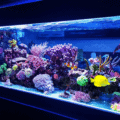

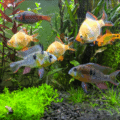
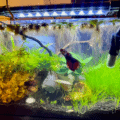
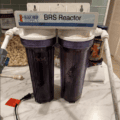

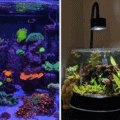
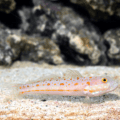
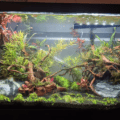

Would also like to know what you think about the heating of dt tank above 90° if there’s nothing in the display tank does it kill ick
Hello Wade,
Theoretically, it should speed up the cycle of the parasite and therefore its demise. As I pointed out in the article, one study found that temps of 104 F could kill one of the forms of the Ich parasite. So heating up to 90 could potentially be beneficial but we can’t be sure it will instantly kill Ich.
Thank you for sharing your situation, by the way.
Good luck!
Momchil
Well I’m a newbie, and made some mistakes costing me, tang ick carrier, new fish.convict new fish, the start of stress in my dp tank, also mistake 2 didnt quarantine either, add to dt tank with 2 clowns and Gobi which were there for 60 days now only have one clown left he’s been treated doing well day 24, so he’s got sometime before going to dt 76 day rule to go
Is it possible to completely remove ick from a display tank? In this way you never ever have to deal with ick again.